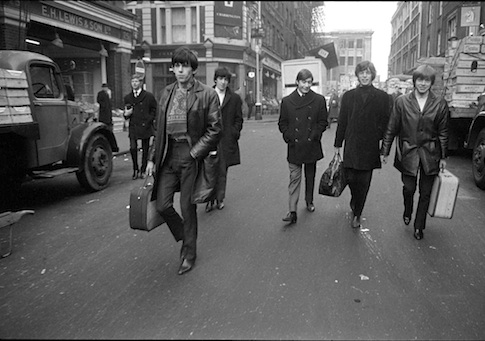From journalists Robin Morgan and Ariel Leve comes The Year of the Revolution, a compendium of first-person recollections on the art, sound, and fashion of 1963.
From the debuts of Dylan and The Beatles on the same winter night in England, through the November assassination of President Kennedy, this collection of eyewitness accounts provides an immersive guide to the history under discussion. Reaching back a half century, we are privy to model Pattie Boyd’s own reminiscences of the Vogue scene and the London melting pot, and her first brushes with the men for whom she would become a fabled muse.
We read of musicians Stevie Nicks and Sir Allan Parker; of Clapton’s guarded first appraisal of the Stones at the Crawdaddy in Richmond; of novelist Jackie Collins’ first impression of the Mary Quant miniskirt; of singer Neil Sedaka’s certainty that the English transfusion of taste and pop had ended his career; and of Vidal Sassoon’s determination to change the world with a pair of scissors.
The revolutionary frills of the period are depicted in all their novelty and vitality. This was as much a time of international trepidation as it was of social and artistic insurgency, and in dialogue with the figures of history Morgan and Leve exhume new insights. Amid the space race, Vietnam, racism, and the pill, Keith Richards, as usual, represents his contemporaries with gusto in his proud admission, "Discipline does not agree with me."
Still, this is more of a backstage music history than an in-depth look at the year in full. The book might stand fifteen pages lighter simply by omitting the bands each interviewee was "listening to" at or around the time of his or her breakthrough.
At large, the pages run the risk of bleak generalization. A lot of stories we have heard before, in an arbitrary context. The sixties are, after all, perhaps the most ubiquitously investigated cultural moment in Anglo-American history.
The spark of this book does not lie in ingenuity of topic, however. Rather, the interviews capture a rare, true slice of what the movers and shakers of the period were actually thinking in the moment. The book is not about what happened in 1963 but about what went on while things were happening: anxieties, ambitions, the intersection of fate and genius, near misses, and the beginnings of stardom.
The air of 1963 was thick with rebellion, says Robert Christgau, then legendary music critic of the Village Voice and contributing editor to Rolling Stone. "One of the ways it was rebellious," he recalls, "was that it wanted to have more pleasure than it was told it could have."
Morgan and Leve say the achievement of the era was liberation: liberation from sexual discretion, from social condemnation of nonconformity, and principally from the "enslavement of creativity."
It was, for the youth of many nations, a year of new freedoms. Boys gawped at the blueprints of Dylan’s new road, while girls relished in Quant’s gift of vibrant wardrobes to replace the "clothes that your mother wore." As Keith Richards says: "It was rare and innocent. No one was old enough to be anything but innocent."
Zachary Slingsby is a writer in Washington, DC.
